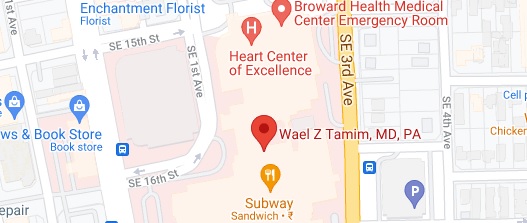
What is Peripheral Artery Catheterization?
Peripheral artery catheterization is a minimally invasive procedure in which a tiny flexible tube known as a catheter is inserted into a peripheral artery (leg or arm) that has narrowed or occluded in order to allow passage of oxygenated blood through the artery to the peripheral tissues.
This procedure involves angioplasty, in which a balloon attached to the tip of the catheter is inflated at the narrowed portion after the catheter is inserted into the artery. The increase in the size of the balloon causes the widening of the artery at the site of the narrowing or blockage and helps improve the arterial blood flow.
What is a Peripheral Artery?
Arteries are the vessels that carry oxygenated blood away from the heart and are larger in size compared to veins. Peripheral arteries supply nutrients to your extremities and the outer regions of the body. Narrowing of a peripheral artery can occur due to the accumulation of fat, cholesterol, and other substances that form a plaque on the inner walls of the artery. Over time this build-up of plaque can choke off blood flow leading to gangrene and loss of a limb.
Indications for Peripheral Artery Catheterization
Peripheral artery catheterization may be necessary if you have been diagnosed with peripheral artery disease (PAD) and have the following signs and symptoms:
- Leg or arm pain that increases with exercise
- Slow-healing wounds
- Decrease in the temperature of the affected extremity
Preparation for Peripheral Artery Catheterization
Prior to the procedure, your doctor will evaluate your medical history and check for weakening pulses in your extremities. Tests that may be ordered will include doppler and ultrasound imaging to measure arterial blood flow, CT angiography, magnetic resonance angiography, and a peripheral angiogram. Before the procedure, your doctor will instruct you to stop taking your medicines if they interfere with the procedure.
Procedure for Peripheral Artery Catheterization
Peripheral artery catheterization is usually performed through the groin area and involves the following steps:
- An intravenous line will be placed in your arm, so you can receive fluids and medicine.
- The catheter insertion site will be cleaned and shaved.
- The spot where the catheter is to be inserted will be injected with local anesthetic.
- A small incision is made on the anesthetized skin so the catheter can pass through it.
- The catheter is passed through your artery under live x-ray guidance until it reaches the narrowed area.
- Contrast dye is injected for your doctor to view and assess for any abnormalities.
- When the catheter reaches the blocked portion of the artery, the balloon is inflated causing expansion of the opening or lumen.
- Once the balloon opens the artery and clears the clot, it is deflated so that blood can flow easily through the artery.
- A tiny stent may be passed through the catheter into the artery and kept in place to help keep it open.
Post-surgical Care and Recovery for Peripheral Artery Catheterization
- You will usually be allowed to leave home on the same day as the surgery.
- You will be given specific instructions for the care of the incision site.
- Regular walking is encouraged as it promotes blood flow in the lower extremities.
- There may be a slight swelling at the insertion site which should reduce in a few days.
- If a stent is placed within the artery, you may be prescribed certain blood-thinning medications that you may have taken for 1 month to a year.
Risks and Complications of Peripheral Arterial Catheterization
Peripheral artery catheterization is a very safe procedure, however, there are minimal risks involved which include:
- Bleeding at the site of incision
- Damage to nerves in the leg
- Bruises over the skin
- Failure of the catheterized artery
- Reaction to contrast dye
Related Topics:
- Minimally Invasive Heart Surgery
- Atrial Fibrillation Corrective Surgery
- Percutaneous Mitral Valve Repair
- Removal of Masses or Tumors from the Heart
- Aortic Dissection
- Coronary Artery Bypass Grafting
- Aortic Valve Disease
- Aortic Stenosis
- Transcatheter Aortic Valve Replacement - TAVR
- Mitral and Aortic Valve Repair and Replacement
- Tricuspid Valve Disease
- Valvular Surgery


